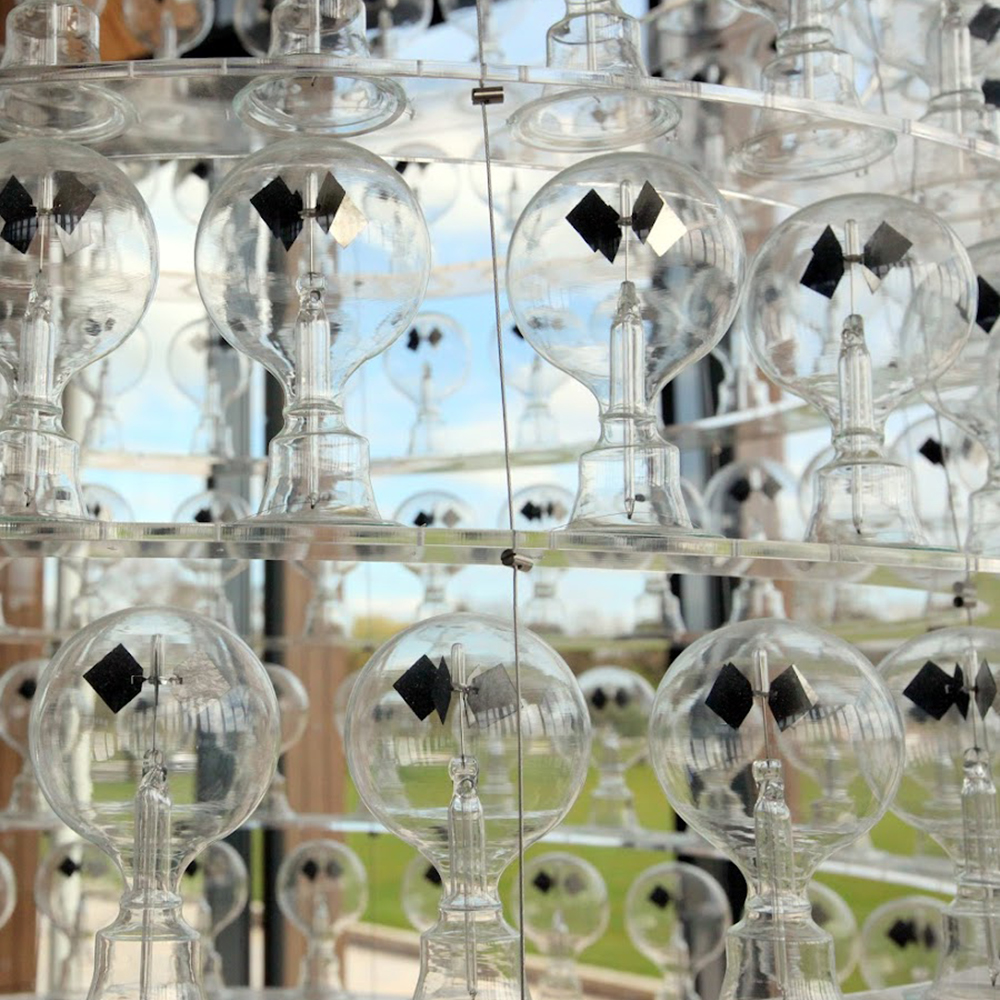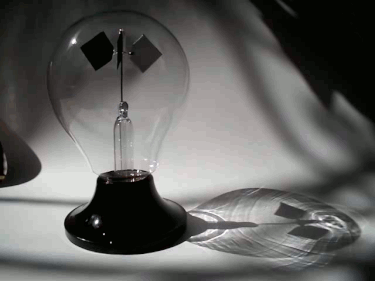Crookes radiometer 7-7-2022

Crookes radiometer is an interesting piece of equipment created in 1873 by William Crookes, and the topic of some conversation in our office, due to the sculpture featuring a large number of the devices in the atrium of the Bristol and Bath Science Park.
The apparatus is comprised of a glass bulb placed under a partial vacuum. Inside this bulb is an arrangement of 4 metal vanes, with one side silvered and the other covered in a black coating, placed on a freely rotating spindle. When exposed to sunlight, the apparatus will begin to spin.
There has always been debate about how the device works. Indeed the instruction sheet provided with it offers both explanations. Originally, particularly in the days of William Crookes, it was thought that the vanes were induced to spin through the action of radiation pressure, in the same way a solar sail might push along a space probe. However, the accepted theory is now that the vane acts as a basic and highly inefficient Heat Engine. The dark sides of the vanes absorb more energy and reach a higher temperature than the shiny side. The dark side then heats the air next to it and causes it to expand and impart a force on the dark side of the vane greater than that imparted on the shiny side.
Further proof that heat is the primary force comes from the fact that holding a hand close to or touching the glass makes the vanes spin. Indeed, it is the case that the vacuum within the glass bulb doesn't want to be too high or too low. There needs to be some air molecules to conduct the heat but not too many as to impede rotation.

